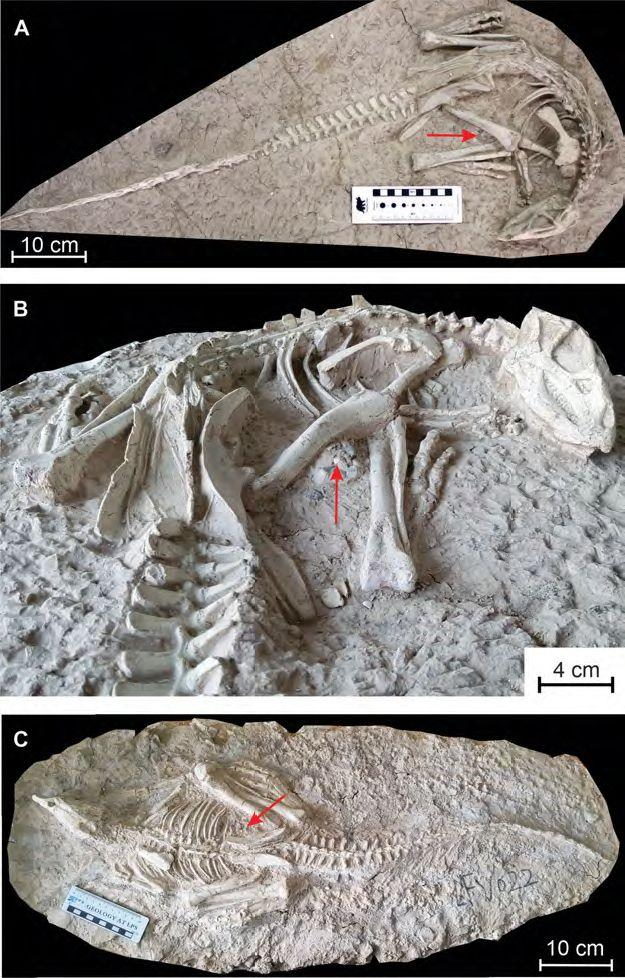Another hitherto unknown dinosaur lived on Earth: paleontologists discovered a new species about 130 million years ago
Another hitherto unknown dinosaur lived on Earth: paleontologists from the Royal Belgian Institute of Natural Sciences in collaboration with other researchers from China and Argentina discovered a new species from two fossils trapped in an underground lair about 130 million years ago.
The discovery of two intact fossils of Changmiania liaoningensis, which took place in the Yixian geological formation, in China, reveals the most primitive ornithopod dinosaur known to date, a sensational discovery that will rewrite a few pages of prehistory.
It was known that the ornithopod dinosaurs, so called because most of the genera belonging to this group had three-toed hind legs, apparently similar to those of birds, were scattered on our planet in the period from the Lower Jurassic to the Upper Cretaceous, approximately 163-65 million years ago.
But this exceptional find could change some assumptions deemed valid so far.

©Royal Belgian Institute of Natural Sciences
Unlike the fossils found in the same area, the dinosaurs now discovered have retained no trace of feathers, but most of the skeletal scaffolding is incredibly well preserved in the location where the individuals died.
“These animals were quickly covered in fine sediment while they were still alive or shortly after their death,” says Pascal Godefroit, who led the study.
It is therefore thought that the unfortunates were victims of a gigantic volcanic eruption: clouds of ash would have immediately covered the inhabitants of the Liaoning forest and therefore the beds of Lujiatun would have been a sort of "Pompeii of the Cretaceous".
The find is probably a small herbivorous bipedal dinosaur, about 1,2 meters long, the oldest ornithopod found to date and which could therefore date the appearance of these species on Earth again.
But there is more, because its appearance would not only describe it as the classic herbivorous, fast-running ornithopod.
“Some features of the skeleton suggest that the animal scavasse tane, just like rabbits do today - explains Godefroit - The neck and forearms are very short but sturdy, the shoulder blades are characteristic of burrowing vertebrates and the upper part of the muzzle is shaped like a shovel. So we believe both specimens were trapped by the volcanic eruption when they were standing resting at the bottom of their lairs 125 million years ago".
A discovery, therefore, that could really make rewrite the history books.
The work was published on PeerJ.
Sources of reference: Royal Belgian Institute of Natural Sciences / PeerJ
Read also:
- The "dancing dragon" fossil is of a new winged dinosaur that lived 120 million years ago
- Fossil of the first giant dinosaur discovered: it is 200 million years old and will make history rewrite
- Largest Megaraptor ever discovered: 10 meters long and more agile than the T-Rex


























